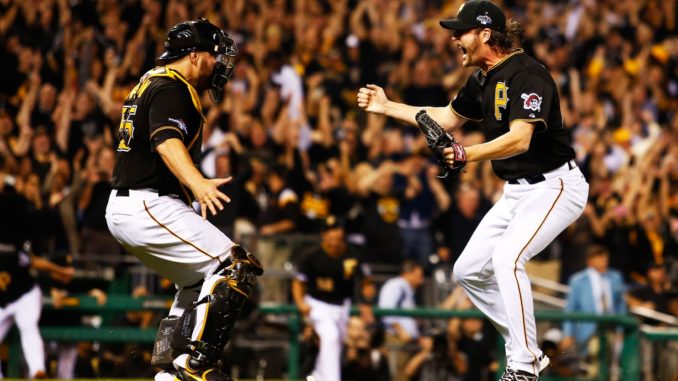
Other case studies in this series:
Kansas City Royals
Washington Nationals
Amazingly the Pittsburgh Pirates, one of baseball’s oldest and most storied franchises, has not won a multi-game playoff series since Willie Stargell and the “We Are Family” crew upset the Baltimore Orioles in the 1979 World Series. In the early ’90s, the Pirates went to, and lost, three consecutive NLCS behind the All-Star outfield of Barry Bonds, Bobby Bonilla, and Andy Van Slyke, but failed to cash in those veterans before they went to free agency. This set the stage for 20 consecutive losing seasons before the Pirates busted out with a 94-68 record in 2013, a wild-card play-in win over the Cincinnati Reds, and an Division Series match-up against the Cardinals.
That 2013 season was the culmination of a five-year rebuild engineered by team president Frank Coonelly and general manager Neal Huntington. This case study will look at the obstacles they had to overcome, why the rebuild didn’t have quite the success or longevity of Kansas City or Washington, and what lessons the Braves and Braves fans can take from them.
Length of Rebuild: Five years (2008-2012)
Primary Talent Acquisition Method: Draft and International Free Agency
Success Level: Three wild card game appearances, one Division Series appearance
Rebuild Timeline
2008: The Blueprint
At the trading deadline in 2007, the Pirates sat with a 42-62 record. Nothing about the team indicated that they were on the doorstep of contention. Their farm system, virtually barren for the better part of a decade, had a few promising prospects, but no one that could help in 2007. The team did have some players that could have been of interest to actual contenders — first baseman Adam LaRoche, outfielder Jason Bay, lefty reliever Damaso Marte perhaps — but instead GM Dave Littlefield decided to trade for right-handed starter Matt Morris from the Giants, a 32-year-old veteran in the midst of a mediocre season. In no way could anyone have been fooled that the addition of Morris would be a difference maker. As it turns out, Matt Morris was terrible, and would only make 16 more major league starts before calling it a career after the Pirates ultimately cut him early in 2008. The Pirates at least didn’t seem to give up much, just minor league pitcher Steve MacFarland and a player to be named later… that turned out to be a former 38th-round non-prospect by the name of Rajai Davis. Davis would of course go on to produce 11.8 fWAR of value in his career (and counting).
Littlefield would have one more month of employment with the Pirates. New team president Paul Coonelly, taking over the position from part-owner Kevin McClatchy, had seen enough of Littlefield’s constant attempts to band-aid the major league roster with low-level free agents and spending prospects for questionable return. He brought in Neal Huntington, who had been Assistant GM to Mark Shapiro in Cleveland, to run the team as General Manager. Coonelly was familiar with Huntington from working in the Commissioner’s office, and was impressed with Huntington’s rebuild plan, which was heavily inspired by John Hart and Shapiro’s work turning around Cleveland in the mid-90s. The Pirates “Blueprint” as it came to be called had three major parts, two of which will seem familiar to readers of the Royals and Nationals case studies, but one interesting new wrinkle.
1. Overhaul Scouting and Player Development
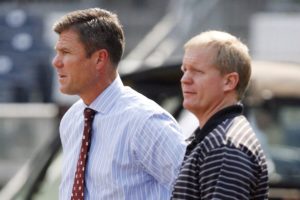
While the farm system did have several important players already in the low minors, and some players on the major league squad that would go on to have good careers, when Coonelly and Huntington took over the Pirates farm system at that point had not had not drafted, signed, and developed a significant major league player since Bronson Arroyo, a 3rd-round draft pick in 1995. Under McClatchy and Littlefield, the drafting emphasis was on signability and saving money. In the player development area, there was little cohesion up and down the affiliate chain, and players would get promoted and instructed to change hitting and pitching mechanics at each level. The attrition level of pitching prospects in the Pirates system due to injury was among the highest in baseball.
Like the Braves in 2014, the Pirates did have some minor league talent in place when the rebuild plan began. Also like the Braves, that talent was in the lower minors and overall depth in the system was poor. After an entire high-talent pitching class that included Kris Medlen, Brandon Beachy, Tommy Hanson, and Mike Minor was sidelined by various ailments, the Braves also launched a comprehensive analysis of what could be done to mitigate pitcher attrition. The result has been a completely revamped protocol for handling both rehabbing pitchers and teenage arms that are still developing. Only time will say if this will slow pitcher attrition rate, but overall Pittsburgh has had some of the most improved results in this area.
2. Invest In International Amateur Talent
One front office executive that kept his job was director of international scouting Rene Goyo. Goyo was well-known in baseball as one of the top evaluators of Latin American talent, and had recently come over from the Indians himself. The Pirates tripled the budget for international scouting and signings and started work on a new baseball academy in the Dominican Republic. They also expanded their international scouting operations outside of Latin America.
The Braves international scouting infrastructure likewise was in good shape when the rebuild began. However, the Braves were constrained by the international bonus slotting system put in place by the CBA, while the Pirates of the late 2000’s were constrained only by their own budget.
3. Build An Analytics Division
The biggest change for the Pirates was the introduction of advanced baseball analytics into the front office and on-field decision-making process. When Huntington took over, the Pirates did not have an analytics department nor a computerized player data warehouse, things that by 2007 were common in most baseball front offices. Huntington himself was somewhat of a video scouting pioneer, getting his start in baseball as an advance scout for the Expos. Huntington cast a net far and wide for baseball innovators, and one of his first hires was Dan Fox of Baseball Prospectus, a computer wiz by day who had authored over 100 columns for the analytically-driven blog and had developed for them their proprietary baserunning metrics. Within a year, Fox and his team would build for the Pirates their own computerized system that helped bring the Pirates scouting, analytics, contract, and medical information to the cutting edge of the game.
The Braves weren’t nearly as far behind the analytics curve in 2015 as the Pirates were in 2008. In fact, current GM John Coppolella was the head of the analytics department as assistant GM under Frank Wren. However, the Braves were and are still a scouts-first player evaluation organization. Coppolella himself has expressed skepticism about the increased valuing of defense that the baseball analytic revolution has brought to the game, and has indicated that the numbers they most value are the ones that confirm for them what their scouts are already telling them.
2008-2010: The John Russell Era
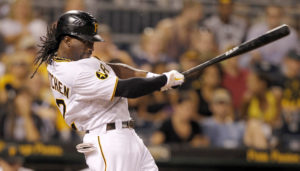
The offseason of 2008 was busy for the Pirates as Coonelly and Huntington reshaped the front office. Incumbent manager Jim Tracy was let go and former Pirates player and coach John Russell was named as his replacement. Russell had spent the previous three seasons managing the Phillies’ AAA affiliate, and had earned a name for himself for player development and motivating players. As for the team itself, Huntington surprisingly didn’t make any significant moves to alter the roster, indicating that he thought they hadn’t seen the best of the team and wanted more time to evaluate.
By July 1, the Pirates were 39-44, 10 1/2 games out of first and Huntington had seen enough. That trading deadline, Huntington started the tear-down of the major league roster, a process that would see every member of the Opening Day 2008 25-man roster gone by the trading deadline 2009 except catcher Ryan Doumit, who was likely only spared by being on the disabled list. Looking to bring in as much talent as possible to complement the Pirates drafting and international efforts, Huntington emphasized quantity over quality in his trades. The bore out over time with a lot of “misses”, despite acquiring many well-regarded prospects of the time such as Jose Tabata from the Yankees, Andy LaRoche and Argenis Diaz from the Red Sox, Tim Alderson from the Giants, and Jeff Clement from the Mariners. All of these were top 10 prospects in their respective systems that didn’t ultimately work out for Pittsburgh. The most successful trade from the Pittsburgh end turned out to be getting Gorkeys Hernandez, Charlie Morton, and Jeff Locke from the Braves for Nate McLouth; Morton and Locke would end up turning out several solid seasons in the back-end of the Pirates rotation.
The Braves have taken some criticism for following the Pirates path by taking a quantity-over-quality approach in their earliest trades of the rebuild, and some of the higher-profile prospects acquired in those trades have stumbled badly, such as Matt Wisler, Jace Peterson, Aaron Blair, and most infamously Hector Olivera. However, the Braves have gotten what looks to be solid mid-rotation starters in Mike Foltynewicz and Sean Newcomb and a starting shortstop in Dansby Swanson. Several more fruits of those early trades like Max Fried just now getting to the majors. The Braves should easily exceed the value that the Pirates got from their early-rebuild trades.
Also during this purge would be the kind of incidental trade that no one remarked on at the time but has probably kept Huntington awake for years. In August 2008, the Pirates sent disappointing, light-hitting utilityman Jose Bautista to Toronto for minor leaguer Robinzon Diaz. The Blue Jays of course would help Bautista radically alter his hitting mechanics and he would go on to become one of the more feared power hitters in the American League and a five-time All-Star.
Whenever you trade someone away, there’s a chance that that player may blossom under another team’s tutelage. While Andrelton Simmons‘ was already a walking defensive highlight reel, the Braves didn’t think he would be able to provide enough offense to be a key cog for a rebuilt team and traded him to the Los Angeles Angels, who this year have helped him unlock his offensive potential.
It helps no one to constantly re-litigate these trades. All teams win some and lose some.
While the trades themselves ultimately didn’t bring in pieces that would significantly help the rebuild, they did create space on the major league roster for prospects that would. The biggest prospect was centerfielder Andrew McCutchen, the Pirates’ first-round pick in 2005. By the end of 2010, McCutchen would be joined by home-grown talent such as first baseman Garrett Jones, second baseman Neil Walker, and third baseman and 2008 first-rounder Pedro Alvarez.
All of the maneuvering, all of the trades, all of the improved player development did not mitigate a disappointing 2010 season. As typical with a rebuild, the first couple of years saw a drop in win totals, but the 57-105 2010 Pirates appalled even the front office that engineered it. Primary owner Bob Nutting and Coonelly publicly supported Huntington and the rebuild, even going so far as Coonelly publishing an open letter to fans to indicate that while the record was not acceptable, ownership still believed in the Blueprint. Russell was scapegoated for his failure to coax better performances from the young players and was dismissed after the season.
Russell was a well-respected baseball man, inside and outside the organization, in many ways the Brian Snitker of the Pirates organization. Under other circumstances, he may have made for a good major league manager. In these circumstances he was not prepared to take the steps the front office needed him to make. The story is still being written on Snitker.
2011: The Education of Clint Hurdle, or: How They Stopped Worrying and Loved the Shift
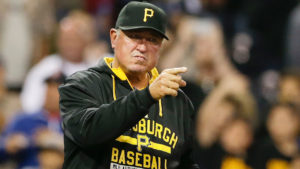
Part of the reason for Russell’s dismissal was his failure to incorporate the data provided by the analytics team in the day-to-day major league team decisions. Because of this, the decision to hire Clint Hurdle as manager looks like an odd one. Steeped in as much in baseball managerial traditions as anyone, the 52-year-old Hurdle instead embraced the front office attempts to interject advanced analystics into the dugout.
Since 2009, the Pirates had started to employ data-driven defensive shifts in the minor leagues to good success. However, at the major league level, Russell and his staff were reluctant to use the data provided, and pitchers weren’t sold on the idea that they could pitch to shifts reliably. Hurdle wasn’t an immediate convert either, but he did observe how defensive shifting helped Andrew Friedman and Joe Maddon‘s Tampa Bay Rays exceeded expectations and make an American League wild card run in 2011 despite having the lowest payroll in the majors. The Pirates on the the other hand went 72-90 in 2011, an improvement of 15 games in the standings over 2010 but still far off the playoff pace. By now, the team had what they thought would be most of its core in place in the major leagues, including McCutchen, who went to his first of five consecutive All-Star games, Neil Walker, Jose Tabata, Pedro Alvarez, Garrett Jones, Josh Harrison, Charlie Morton, James McDonald, Jeff Karstens, Brad Lincoln, and Joel Hanrahan.
Of this core, only McCutchen and Harrison remain with the Pirates. I mention this only to caution that front offices must always be clear-eyed about the actual strength of their players. When players don’t get the job done, even players once thought to be potential core players, a front office has to be ruthless in pruning those players to give others a shot. Blair, Wisler, and Peterson had their shots for Atlanta and may still end up playing a role, but front office patience isn’t limited, especially with equally or more talented options in the system, and in the Pirates case, when payroll is extremely limited.
The Pirates would also have one of their best drafts in 2011, taking right-hander Gerrit Cole in the first round and following up with outfielder Josh Bell in the second and right-hander Tyler Glasnow in the fifth. This draft helped take some of the sting away from a disastrous 2009 draft that saw the team take defensive-minded catcher and current Brave Tony Sanchez with the sixth-overall pick, in what may have been one of the first attempts by a team to have a draft strategy to purposely go underslot with a first round pick to spread money throughout the draft; unfortunately for Pittsburgh, no other draft picks from that year would have a significant major league impact. Some international signings however were starting to gain prospect traction, most notably outfielders Sterling Marte and Gregory Polanco.
2012-13: Pittsburgh’s Analytic Revolution and the End of the Rebuild
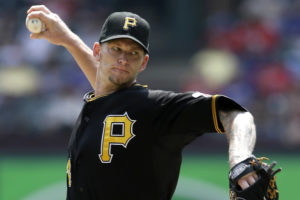
In 2012, Hurdle would take another firm step towards accepting modern analytics into the clubhouse when he invited Dan Fox and analyst Mike Fitzgerald to coaches meetings during homestands. At first they attended but did not offer suggestions unless asked, but by the end of the season they were seen as sources of expertise by Hurdle and his staff and Fitzgerald was traveling with the team to give and receive instant feedback on analytical advice put into play. With increased coaching buy-in came gradual player buy-in.
The Pirates also made a trade that shocked major league baseball before the 2012 season. The big-dollar New York Yankees, tired of paying so much revenue sharing tax and looking to go in a more fiscally responsible direction, decided to cut payroll by cutting ties with disappointing right-hander A.J. Burnett after three seasons into a five-year, $82.5 million deal. On February 19, 2012, the Yankees sent Burnett and $20 million to the Pirates for minor leaguers Exicardo Cayones and Diego Moreno in what was clearly nothing but a salary dump for the Bronx Bombers.
Most baseball pundits thought Huntington was desperate, as they had been spurned by several free agents as he tried to stabilize the starting rotation. Burnett had a miserable 4.79 ERA/4.63 FIP with a 1.45 WHIP in his three seasons with New York and looked like a boondoogle for the penny-thrift Pirates, even with the Yankees paying $20 million of the remaining $33 million owed over the next two seasons. But the Pirates analytics and scouting and development teams thought they could extract value from the 35-year old Burnett. They encouraged him to dial back his repertoire to his two-seam fastball, his sinker, and his knuckle-curve, that latter of which became his go-to swing-and-miss offering. Burnett responded and turned his career around, giving the Pirates 202.1 innings in 2012 with a 3.51 ERA/3.52 FIP.
To aid Burnett and the other pitchers, the Pirates signed catcher Russell Martin. While coming off a somewhat disappointing offensive season with the Yankees, Russell rated highly in pitch framing, a relatively new area of analysis that was changing how teams evaluated catcher contributions to defense. Martin was signed to a 2-year, $17 million contract, the highest given out by Huntington to that point.
Unfortunately for Pittsburgh, 2012 brought another losing season, this time with a more respectable 79-83 record, but there were severe rumblings in the press that ownership was having doubts about how the rebuild had concluded. Given that almost every young player traded for in the roster purges of 2009 and 2010 had been a dud likely contributed to the discontent.
Like the Royals before them, the end of the Pirates rebuild did not mean an immediately end to losing. It takes some time for young players to get to playing in the majors with confidence. The rebuild for Atlanta isn’t quite over, but with the front office making well-publicized runs at the likes of Chris Sale, Jose Quintana, and Chris Archer over the last season, it seems like it may be close. That doesn’t mean 2018 will be a winning season, as there’s still several projected core players that have yet to make their major league debuts.
In the end, yet another public vote of confidence was given to Huntington and Hurdle, but both men knew that 2013 would be a critical season if they were going to have the opportunity to see the fruits of their labors.
After the 2012 season ended, Huntington and Hurdle met privately at Hurdle’s home. They discussed the reality of the Pirates situation. The payroll was among the lowest in baseball, and it would remain so. Also, some of their projected core players had not progressed as expected. In short, they knew they had a flawed team, but they were unlikely to get significant help outside the organization and none of the team’s most talented prospects were likely to be ready to open the season in Pittsburgh. Hurdle and his staff would have to wring the very last drops of production out of his existing roster.
It was at this meeting that Hurdle agreed to go all-in with the analytical suggestions of Fox and his group. Defensive shifting would become common-place. Pitchers would be instructed to pitch with more fastballs inside to get hitters to pull the ball into the shifts, instruction that had been anathema to many of them through their professional history. In 2013, the Pirates would go from shifting in 105 plays the season before to 414. This would help the team go from -25 defensive runs saved in 2012 to +55 in 2013, the best defense in the majors. This in turn helped team ERA drop from a respectable 3.86 (8th in the NL) down to 3.26 (3rd).
Before the season, Huntington did make a controversial move, trading away popular closer Joel Hanrahan and young utilityman Brock Holt to Boston for a bevy of prospects and journeyman reliever Mark Melancon in Boston’s seeming neverending quest to find a “true closer”. The irony of this of course is that Hanrahan would only pitch 9 more major league games as he battled injuries and ineffectiveness. While Hanrahan had a solid 2.72 ERA and 36 saves for Pittsburgh in 2012, the analytics team had been concerned about his peripheral stats, which after three outstanding seasons indicated he was had been more lucky than good in 2012. They turned out to be rightly concerned, and right again about picking up Melancon, who turned around and put up four great seasons out of the Pittsburgh bullpen.
There’s no more overvalued commodity in baseball than the so-called “true closer”. Relievers are imminently fungible. What should be the emphases when reconstructing a bullpen is getting as much talent as possible that can pitch regardless of the game situation or inning. In this area the Braves, with their seeming surplus of highly regarded young arms, may be in a position soon of having a playoff-caliber bullpen, perhaps before having that playoff-caliber rotation.
The Pirates also identified Minnesota righty Francisco Liriano as a potential turnaround candidate similar to Burnett from the year before, and like Burnett before, Liriano responded with one of the best seasons of his career. In addition to the veterans Burnett and Liriano, the Pirates brought up future ace Gerrit Cole, who was almost immediately successful, and got solid contributions from Jeff Locke and Charlie Morton. The bullpen was outstanding as well, with veteran Jason Grilli leading a pack that included breakouts from Melancon and left-handers Justin Wilson and Tony Watson.
On the offensive side, former Miami Marlin Gaby Sanchez helped stop the revolving door at first base, and prospect Starling Marte took over left field. Andrew McCutchen would hit .317/.404/.508 and win the MVP, and the Pirates would finally break through with a winning season, going 94-68, finishing in second place in the NL Central, and winning the wild card play-in game against Cincinnati, then taking the eventual NL Champion Cardinals to five games in the division series.
2017: The Pirates Today

After a run of three straight wild card appearances, the Pirates dropped to a 78-83 record in 2016 and at the time of this writing is 67-72, 8.5 games out of the division lead, 7 games back in the wild card standings, and a likely second missed playoff in a row. Burnett retired after the 2015 season and Liriano was traded during a difficult 2016 season to Toronto. The Pirates have tried to patch their leaky rotation with low-cost veterans like Ryan Vogelsong and Jon Niese to poor result as prospects like Tyler Glasnow (control) and Jameson Taillon (Tommy John surgery, then a fight against testicular cancer) experienced set-backs. The Pirates did get a boost when history repeated itself in 2016, with the Yankees dumping disappointing starter Ivan Nova to the Pirates, who have since helped Nova resurrect his career.
Unable to re-secure Russell Martin’s services after the 2014 season, the Pirates have turned to catcher Francisco Cervelli, another plus pitch framer, and signed him to a 4-year deal during the 2016 season (to the rumored chagrin of the Braves, who had planned on targeting him in free agency).
But the biggest story of the last two seasons has been the rapid cratering of Andrew McCutchen’s value. While still an above average hitter, McCutchen is now far from the All-Star caliber player from as recently as 2015, and while he remains in centerfield, all metrics show that he should give way to Sterling Marte. As for Marte, he was forced to serve an 80-day suspension for testing positive for Nandrolone, a performance enhancing drug. The suspension wiped out most of the first half of 2017 for Marte, and by the time he returned the team was essentially out of the running.
Other promising prospects haven’t proven to be impactful players in the major leagues yet, most notably toolsy outfielder Gregory Polanco, the top prospect in baseball before the 2014 season. This season first baseman Josh Bell has emerged as the latest Pirates answer to first base, but fellow anticipated prospect infielder Max Moroff has so far not gained traction. Current top prospect outfielder Austin Meadows has stumbled this year as well, fighting an assortment of injuries at the AAA level, limiting him to 81 games played.
As anyone who has followed baseball can attest to, there’s no such thing as a “can’t miss” prospect. Rebuilding clubs can’t take drafts off. The Braves look to have had three fine drafts in the rebuild to date, and that redundancy will be need as players get hurt, develop more slowly than expected, or don’t pan out after all. As John Coppolella says, the Braves don’t want a window, they want waves, and the team cannot afford a Tony Sanchez draft, or a draft where they fail to sign their first overall pick as what happened to the Pirates in 2012 with Mark Appel,
So it seems like the Pirates may be approaching another crossroads. Still a team with limited payroll flexibility, the team will have to determine if they can keep moving forward with their current core. Whatever they decide, the team has once again given it’s blessing to GM Neal Huntington and manager Clint Hurdle, who were just re-signed to 4-year contracts.
Lessons For the Braves and Braves Fans
- Like it or not, the best teams in baseball regularly have the best analytical departments and managers that know what to do with the information provided them. Last season’s match-up between Cleveland and Chicago is particularly emblematic of this. It’s not a matter of trends, it’s a matter of relevance. To that end, it matters very much who the field manager is, and if they are using facts and data to inform their decisions… because it’s becoming increasingly likely the guy in the other dugout is.
- That said, analytically-inclined fans shouldn’t dismiss traditional baseball men out-of-hand either. If Clint Hurdle can embrace the analytic revolution, others can too. Experience is a commodity. Experience married to a willingness to keep an open mind regarding new ideas is a weapon.
- Don’t dwell too long on the players that have moved on. It can take many years to fully judge a trade, and by the time those trades can be properly evaluated the team may be so radically different that it would be hard to imagine what would have happen if the trade hadn’t occurred.
- Likewise, don’t fall in love with the players until they have settled in. A rebuilding team’s players are constantly being scrutinized to see if they really will be part of the next winning team or if they need to be shunted aside. That process just has to play out.
- There are no guarantees that the first season after a rebuild ends will be successful. Almost every team has had a lull where the young players have to find themselves at the major league level. Teams (and fans) need to trust that their scouting, development, and analytics teams did a good job.
- Getting back to winning baseball may be easier than staying there.


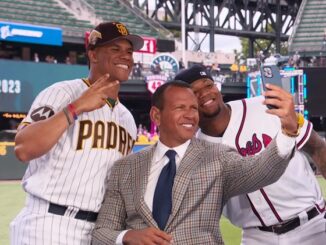
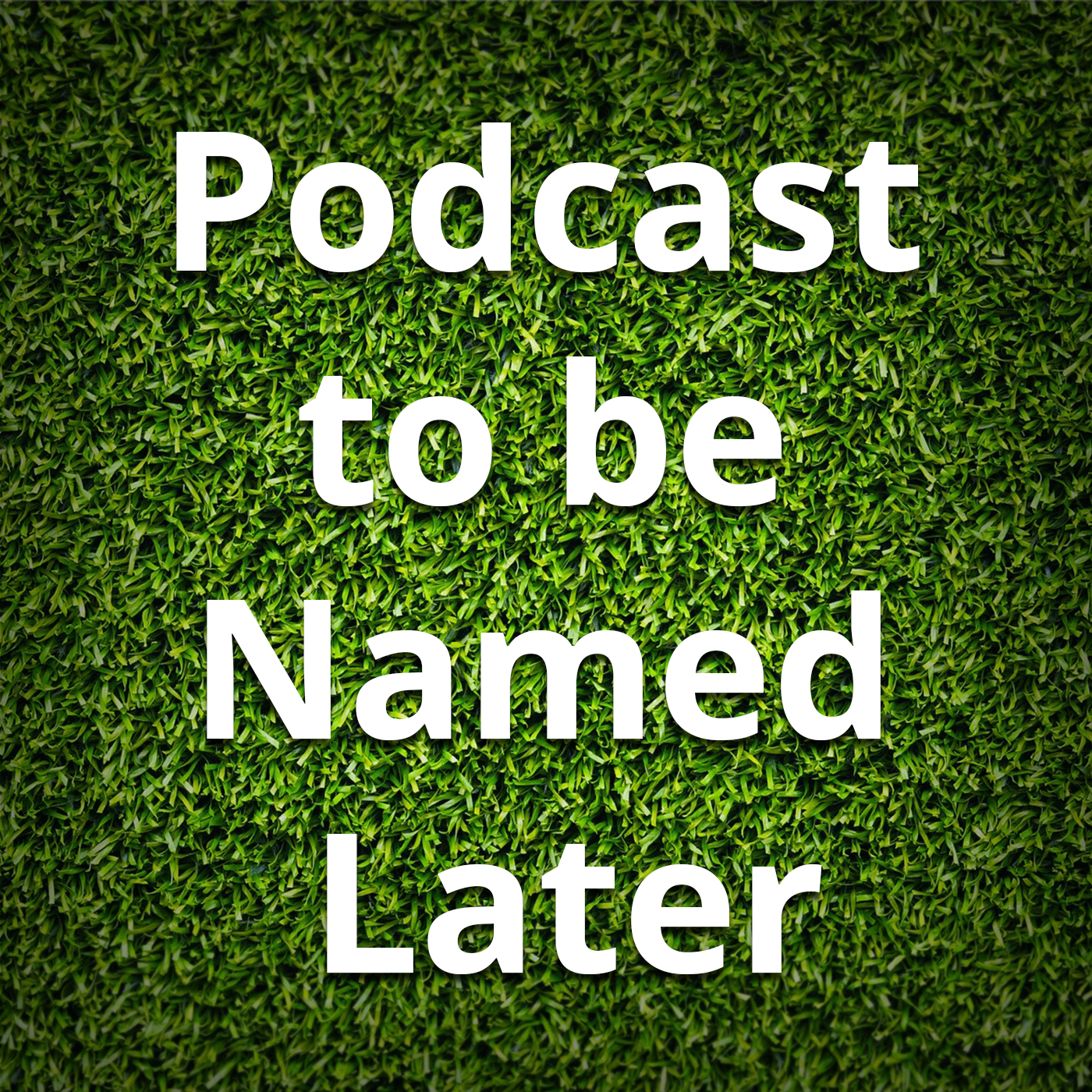
Leave a Reply